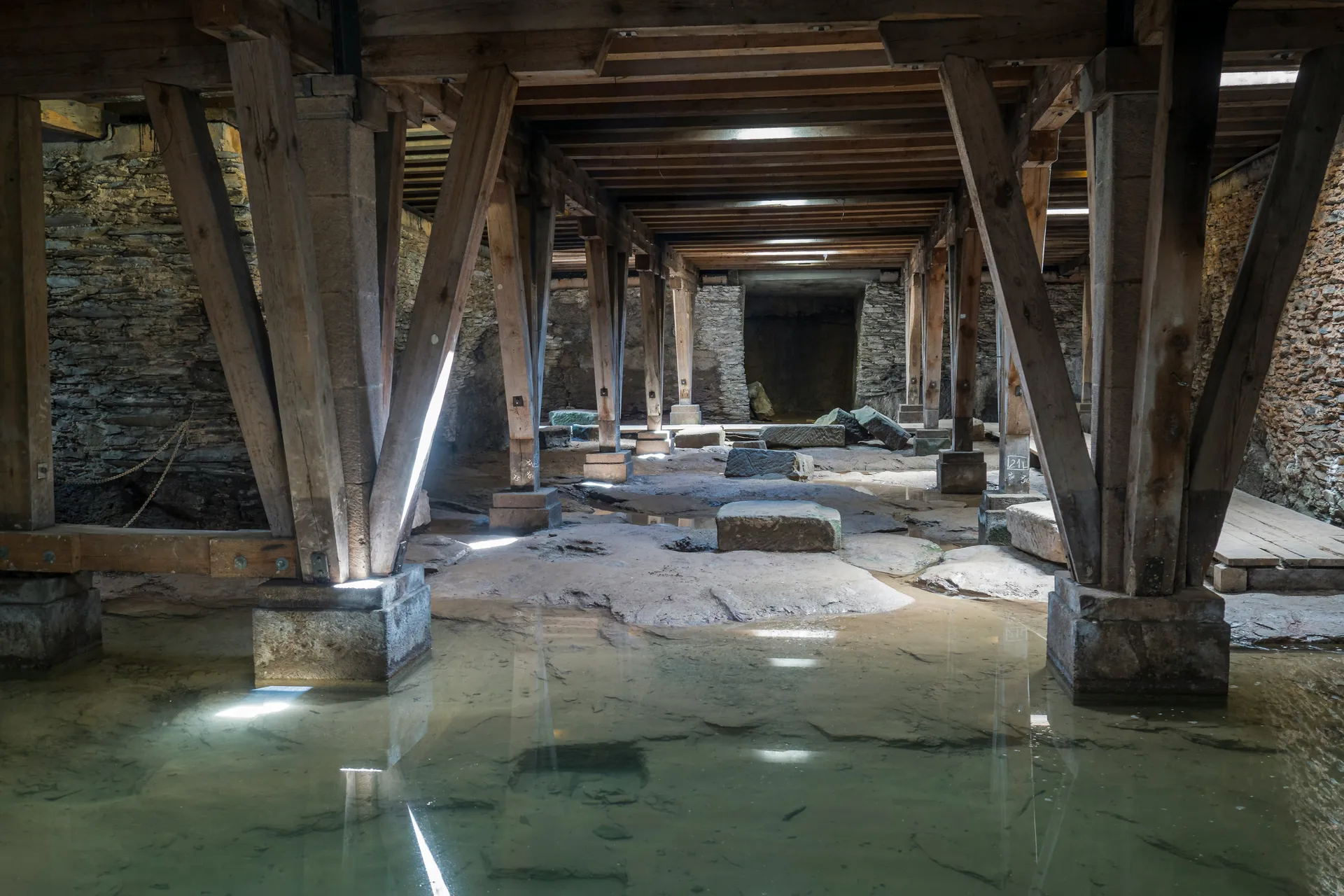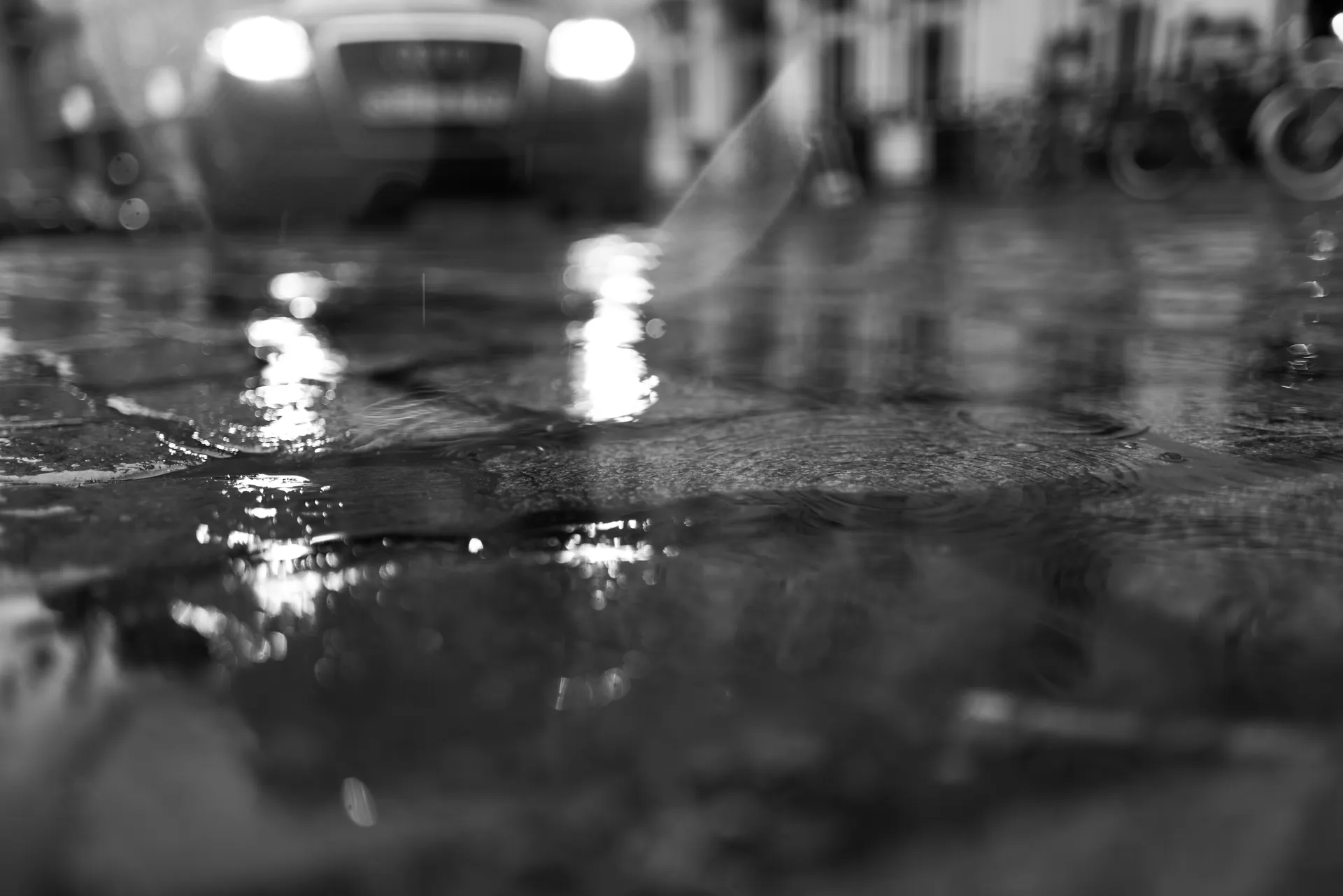
Water Leaking in Basement: Finding the Source & DIY Fixes
Discovering water in your basement is a homeowner’s nightmare. Your mind immediately races to thoughts of property damage, mold, and costly repairs. Take a deep breath. As a designer who has overseen dozens of basement renovations, I can tell you that finding the source of the leak is the critical first step to taking back control.
This guide is designed to be your “leak detective’s manual.” We’ll walk through the common scenarios step-by-step, using the location of the water as our primary clue to uncover the root cause.
Key Takeaways
- The location of the water is the biggest clue to its source.
- Water from the wall-floor joint often indicates a groundwater pressure problem, requiring professional solutions.
- Leaks high on the walls are typically caused by surface water issues, some of which you can investigate yourself.
- Safety First: If you have standing water, be aware of electrical shock hazards.
Immediate Action Steps: What to Do Right Now
Before you start your investigation, take these steps to mitigate damage and ensure safety.
Basement Leak First Response
The Leak Detective’s Guide: Where is the Water Coming From?
Now, let’s put on our detective hats. The location where water appears tells a specific story about why it’s there.
Scene #1: Water is coming from where the wall meets the floor.
This is the most common scenario I encounter. If you see water seeping in right at the cove joint (where the concrete floor meets the foundation wall), you’re almost certainly dealing with hydrostatic pressure.
- What it means: The soil around and under your foundation is saturated with water. This creates immense pressure, forcing water through the path of least resistance—the non-structural joint between your walls and floor.
- The Cause: High water table, heavy rains, or poor soil drainage.
- The Solution: This is not a surface-level problem. The solution involves professional water management systems like an interior French drain and a sump pump to collect and eject the water before it can enter.

As a contractor, I want to emphasize that hydrostatic pressure isn’t just a ‘water problem’—it’s a structural one. The constant pressure against your foundation can lead to bowing walls and significant cracks over time. This is a clear signal that your home’s water management system needs a professional overhaul.
Scene #2: Water is coming from high up on the foundation walls.
If you see streaks of water, dampness, or mineral deposits starting high on the basement walls and running down, the culprit is likely surface water from outside.
- What it means: Water isn’t being properly directed away from your home’s foundation. It’s pooling against the exterior walls and finding its way through the porous concrete or tiny cracks.
- Your DIY Checklist: This is one area where you can do some effective investigating yourself.
- Check Your Gutters: Are they overflowing during rain? They may be clogged with leaves and debris.
- Inspect Your Downspouts: Are the extenders missing or too short? Downspouts should discharge water at least 6-10 feet away from the foundation.
- Examine the Grading: The ground immediately around your foundation should slope away from the house. If it’s flat or slopes inward, water will pool against your walls.
Scene #3: Water is coming from cracks in the floor.
Seeing water bubble up from cracks in the middle of your basement floor is another classic sign of hydrostatic pressure.
- What it means: The groundwater pressure underneath the slab is so intense that it’s pushing water up through existing cracks in the concrete.
- The Solution: This requires professional intervention. The cracks themselves can often be sealed by injecting them with epoxy or polyurethane foam, but this may not solve the underlying pressure problem. It often needs to be addressed in conjunction with a comprehensive drainage system.
Scene #4: Water is coming from around windows or pipes.
If the leak is localized to a window or a spot where a pipe (like for a water line or HVAC) goes through the wall, the issue is likely a failed seal.
- What it means: The caulk and seals used to make these penetrations watertight have degraded over time. For windows, a clogged or improperly installed window well drain is a very common cause.
- The Solution: While this seems like a simpler fix, it’s critical that it’s done right. A professional can properly clean the area and apply high-grade, durable sealants to create a lasting waterproof barrier.
What to Expect: Common Basement Leak Repair Costs
It’s important to understand that repair costs vary widely depending on the root cause and the complexity of the solution. A surface-level fix is far less expensive than a comprehensive groundwater management system. Below is an overview of typical cost ranges for professional services.
| Professional Service | Typical Cost Range | What It Solves |
|---|---|---|
| Crack Injection | $300 - $800 per crack | Fixes a single, non-structural wall crack |
| Window Well Repair & Sealing | $200 - $1,000 per window | Solves leaks around windows |
| Interior French Drain System | $3,000 - $12,000+ | Manages persistent seepage from hydrostatic pressure |
| Sump Pump Installation | $600 - $1,800+ | Works with a drain system to eject collected water |
| Exterior Waterproofing Membrane | $9,000 - $20,000+ | The most thorough but expensive solution, stops water from ever reaching the foundation |
Major exterior repairs ahead? When water damage requires extensive exterior work, consider addressing your entire building envelope. Use our roof replacement calculator to see if coordinating roof and waterproofing work could save money.
Conclusion: From Detective to Decision-Maker
By following these clues, you’ve moved from a state of panic to one of informed understanding. You can now have a much more intelligent conversation with a basement waterproofing professional or foundation specialist. You’ll know whether to point them to your gutters or to the cove joint, saving diagnostic time and helping them develop the right solution to keep your basement dry for good.
